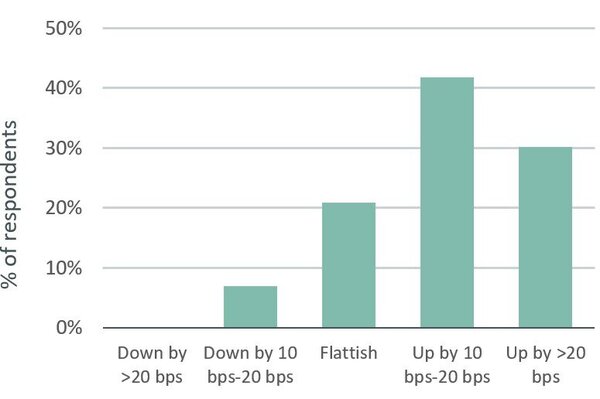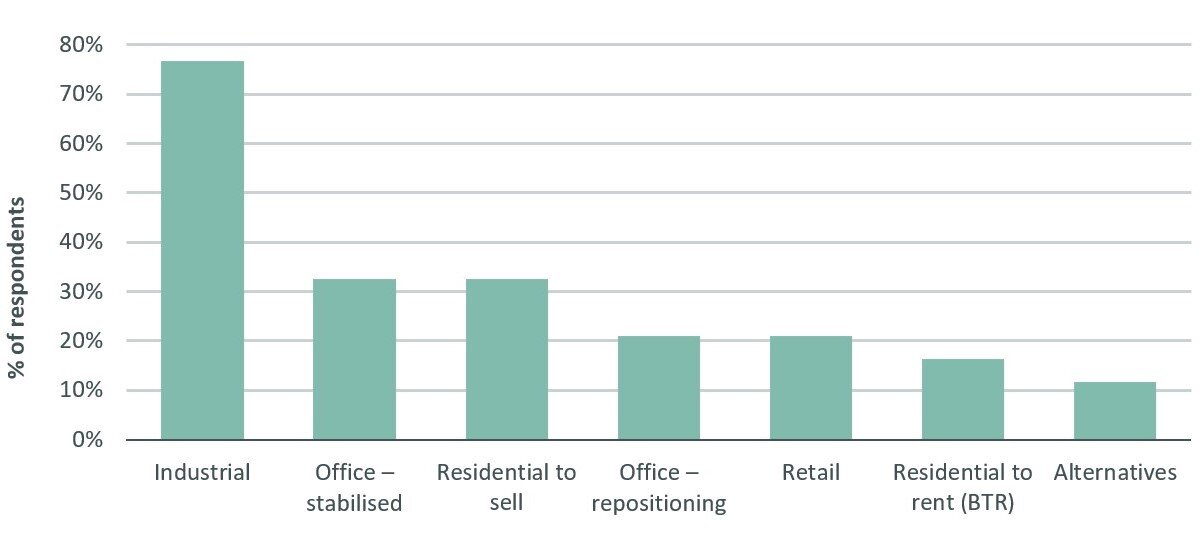Commercial Real Estate News

Australian Lenders Seek Real Estate Exposure Through Flight to Quality Assets in 2022
Commercial News » Sydney Edition | By Michael Gerrity | November 10, 2022 8:05 AM ET
According to a new CBRE survey, economic headwinds in 2022 have failed to dampen lender interest in Australian real estate, with industrial assets garnering the most attention.
CBRE Research tapped a mix of 43 local and international banks and non-bank lenders for its Q4 2022 Lender Sentiment Survey, with 44% expressing a desire to grow their commercial loan books.
CBRE's Managing Director of Debt & Structured Finance Andrew McCasker noted that this was slightly up on the Q3 result and was led by non-bank lenders, with higher interest rates generating higher returns, making the Australian market more appealing.
Industrial remains the sector of choice overall, with nearly three-quarters of the survey respondents expressing a preference for that asset class.
Preferred asset class for new investment
"Domestic banks are also favouring stabilised office and retail assets, which affirms a flight to quality for credit amid macro uncertainty," Mr McCasker said.
"Non-bank lenders are meanwhile keen to grow their exposure to build-to-sell projects and office re-positioning opportunities, which is reflective of the higher returns available when lending against riskier assets. These lenders have also raised significant credit, suggesting that they are waiting on the side lines for distressed opportunities."
The higher non-bank appetite for risk is also being reflected in pre-lease requirements for new development projects, with non-banks more likely to opt for a pre-lease rate of below 40%, while domestic banks are favouring projects that are over 60% pre-committed.
The survey shows that just 7% of respondents are looking to decrease the size of their loan books, with 49% expecting to remain at around current levels and 44% looking to increase.
Will Edwards, CBRE Associate Director, Debt & Structured Finance, noted that domestic banks were anticipated to hold, if not grow, market share given their strong balance sheets and lower exposure to wholesale markets.
Conversely, there were some early signs of liquidity issues from international banks, which might hinder their ability to grow their books, Mr Edwards said.
The survey highlights that rate expectations have increased since Q3, with over 40% of lenders expecting margins to increase by 10-20bps and a further 30% expecting a more than 20bps rise.
"While there are ongoing issues around loan serviceability, we have noticed a slight wind back in hedging requirements, suggesting lenders have comfort that the interest rate cycle is approaching a peak," Mr Edwards said.
In the next three months, credit margins on new loans are likely to move:

Sign Up Free | The WPJ Weekly Newsletter
Relevant real estate news.
Actionable market intelligence.
Right to your inbox every week.
Real Estate Listings Showcase
Related News Stories
Commercial Real Estate Headlines
- One Trillion Dollars of America's Commercial Property Loans Mature in 2025
- U.S. West Coast Dominates Self Storage Demand
- Phoenix, Orange County and Inland Empire Emerge as Leading U.S. Industrial Markets
- U.S. Mega Distribution Centers Leasing Activity Grew in 2024
- U.S. Commercial Borrowing to Increase to $583 Billion in 2025, Up 16 Percent Annually
- Demand for U.S. Life Sciences Space Spikes 28 Percent Annually in Late 2024
- Multifamily Property Sector in America Rebounding
- Asia Pacific Commercial Property Investment Spikes 23 Percent in 2024
- U.S. Commercial Property Market Primed for Growth in 2025
- Architecture Industry Sees Mixed Signals as 2025 Approaches
- Global Data Center Demand Spikes in 2025
- 2025 Prediction: U.S. Commercial Investment Recovery Expected to Gain Traction
- Holiday Retail Sales for 2024 to Hit Record $1 Trillion
- Tech, AI Industries Drive Largest Share of Office Leasing Activity in U.S.
- Commercial Real Estate Lending in U.S. Enjoys Strong Growth in Q3
- U.S. Multifamily Market Begins Recovery in Q3
- Commercial Investment in Japan Spikes 24 Percent Annually in Q3
- Despite Return-to-Office Mandates, U.S. Office Vacancies Continue to Rise
- PROPSIG Tech Startup Acquired by World Property Data
- U.S. Commercial Mortgage Debt Hits $4.7 Trillion in Q2 as Delinquencies Increase
- Hong Kong Class A Office Rents Continue to Downtick in Mid-Summer
- U.S. Office Landlords Tenant Concessions Decline for First Time in 4 Years
- U.S. Commercial Mortgage Originations Spike 27 Percent in Q2 Over Q1
- Phnom Penh's Commercial Office, Retail Markets Face Slowdowns in 2024
- Global Edge Data Center Market to Hit $300 Billion by 2026
- Commercial Property Transactions in Japan Dive 25 Percent Annually in Q2
- Delinquency Rates for U.S. Commercial Property Loans Downticks in Q2
- Megawarehouse Lease Deals in U.S. Increase in 2024
- Office Tenants' Flight to Quality Buildings Increases in 2024
- Commercial Lending in Japan Upticks 6 Percent Annually in Q1
- AI Driving Significant Global Data Center Growth in 2024
- Total U.S. Commercial Mortgage Debt Rises to $4.7 Trillion in Q1
- U.S. Commercial Mortgage Delinquencies Rise in Early 2024
- Asia Pacific Office Sector to Further Reprice Throughout 2024
- U.S. Retail Foot Traffic to Surpass Pre-Pandemic Levels by 2025
- Commercial Real Estate Lending in U.S. Slowed in First Quarter
- Japan Commercial Property Investment Volume Jumps 7 Percent in Q1
- Asia Pacific Commercial Property Investment Leads the World, Spikes 13 Percent
- Driven by High Rates, U.S. Commercial Lending Imploded 47 Percent in 2023
- After Two Year Slump, Prime Multifamily Metrics Uptick in U.S.






